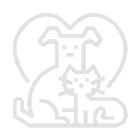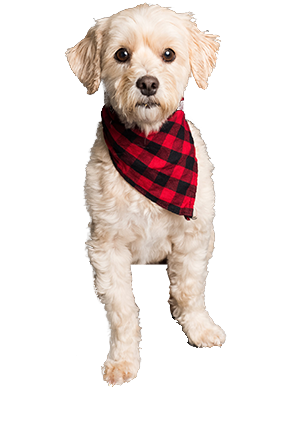The first thing Sylvia MacDonald, K9’s owner, sees in the dogs that come through the front door of the shop?
The owner.
“We really look at the owner first because most issues stem from the owner,” Sylvia tells me. “We talk to the owner as we assess the dog’s behaviour. You can’t just approach any dog because we’re strangers, so we assess the behaviour of both.”
For Sylvia and dog groomers everywhere, it’s important to read the connection between dog and owner. Once that understanding is established and the groomer is comfortable with the relaxed attitude of everyone involved, only then do they put their hands in a the dog’s mouth.
1. How can people comfort their pets?
Dogs read their owners. The majority of their reactions are based on how their people react. The more calm and natural the owner is, the more relaxed the animal will be. Anesthetic-free teeth cleaning is a natural, non-invasive procedure so the dog will inevitably respond the same way the owner responds.
2. Do dogs read people?
“Absolutely.” Dogs are intelligent and they’re intuitive. They pick up on the energy of their people and the people around them. “If you’re really nervous it goes right down the leash,” says Sylvia.” Let’s say you’re walking your dog and you see a pitbull running at you – how will you respond? How will your dog respond?”
Whether you’re training a new pup or reinforcing habits like refraining from barking, it’s important to be assertive with your dog but it depends on the situation. Every dog has a different personality, just like humans. Once you tap into a dog’s personality training that dog will get easier, but understanding their owner’s personality gives groomers a headstart.
3. How do you know when to be assertive and when to be supportive?
It’s handy to know the characteristics of your dog’s breed. For instance, a sheltie is a very timid dog, so groomers like Sylvia are very careful and gentle when they work on their teeth. On the other hand, Sylvia approaches a growling cocker spaniel much differently. Another unique situation is the rescue dog who’s been mistreated. In that situation patience is key.
4. Is it difficult to build trust when you\’re grooming a new dog?
It depends on the dog, their breed and their history. “Every dog has a unique personality and that’s what a behaviourist looks for,” says Sylvia. “What’s going on in that dog’s head? What was their history? How can we help this particular animal?”
Not only do dog behaviourists work to understand their animals better, a big part of their job is understanding the circumstances that helped shape that dog.
5. What’s it like when you finally establish that trustworthy relationship?
“It’s beautiful, as soon as a dog is confident with you he’ll let you do anything,” says Sylvia. Building a relationship from scratch and establishing trust with a dog demonstrates your ability and your willingness to take care of him. He or she knows you won’t hurt them and they know they can relax and go with the flow.
6. Ever thought about bigger game? Like cleaning alligators’ or elephants’ teeth?
“You know what, humans always say to me, can you clean my teeth? I always say no, you bite, the dog doesn’t. I thought about horses but I’m not a horse trainer or know enough horse training, so no, I’m going to stick with dogs.
“Working with dogs is what I know and it’s what I’ve always known.”
And for Sylvia, it helps that the dogs know it, too.


